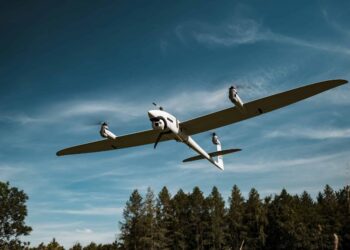US Air Force, KIRTLAND AIR FORCE BASE: For an aircraft to achieve hypersonic speeds, ranging from 6,000 to 15,000 mph (Mach 9 to Mach 22), and reach altitudes between 100,000 to 150,000 feet, it needs an airframe structure designed to survive intense heat and pressure.
Such technology is in development by scientists and engineers with the Falcon hypersonic technology vehicle, or HTV, program.
Started in 2003, the joint Air Force and Defense Advanced Research Projects Agency endeavor consists of two objectives: to develop hypersonic technology for a glided or powered system and advance small, low-cost and responsive launch vehicles.
Other partners participating in the program include NASA, the Space and Missile Systems Center, Sandia National Laboratories and the Air Force Research Laboratory's air vehicles and space vehicles directorates.
Both AFRL organizations have been working on the project's hypersonic technology vehicle portion here, specifically focusing on technologies for the glided system.
“We have made great progress and are on track for the first glided hypersonic test vehicle flight in 2007,” said Russ Partch, the Falcon HTV-1 manager. “It will enable a revolutionary capability to quickly respond to events anywhere around the world.”
Planned for a less than one-hour flight in September 2007, the Falcon HTV-1 is set to complete its inaugural voyage over the Pacific Ocean. Attaining Mach 19, the vehicle will briefly exit the Earth's atmosphere and re-enter flying between 19 and 28 miles above the planet's surface. Demonstrating hypersonic glide technology and setting the stage for HTV-2 represent the primary focus of the lower risk, lower performance initial flight.
“This is a very unique vehicle. During the early part of the flight, it acts like a spacecraft. In the middle phase, it re-enters the atmosphere like the space shuttle, and in the latter stage, it flies like an aircraft,” Mr. Partch said. “It is an interesting mix of challenges and technologies.”
For the second demonstration, scheduled for 2008 or 2009, the Falcon HTV-2 will feature a different structural design, enhanced controllability and higher risk performance factors during its high-speed journey. Like its predecessor, the system will reach Mach 22 and then finish its one-hour plus mission over the Pacific Ocean.
On the other hand, the third and final Falcon HTV, slated for 2009, will be a departure from the previous demonstrations. The reusable hypersonic glider will lift off from NASA's Wallops Flight Facility at Wallops Island, Va., and then more than an hour later, be recovered in the Atlantic Ocean.
In addition, the HTV-3, flying at Mach 10, will be designed to achieve high aerodynamic efficiency and to validate external heat barrier panels that will be reusable.
“The HTVs will prove technologies for global reach vehicles that can get a payload to the area of interest quickly in support of the joint warfighter,” Mr. Partch said.
Currently, program staff at the space vehicles directorate are helping develop a thermal protection system for the HTV structure to withstand 3,000-degree temperatures and incredible exterior pressures, 25 times more than those experienced by the space shuttle. An important component of this critical technology, the all-carbon aeroshell, must keep from being crushed or burned up in this environment. To keep the vehicle interior cool, an advanced multilayer insulation is being created for long flights. Researchers are also designing tools to enhance HTV navigation and maneuverability for robust aerodynamic performance.
“We are now starting to build the HTV-1's critical flight hardware components,” Mr. Partch said. “The entire test vehicle will be integrated at the Lockheed Martin Corporation's facility in Valley Forge, Pennsylvania.”
With its initial flight vehicle project progressing rapidly, the Falcon HTV program is poised to meet the challenges of achieving unprecedented hypersonic technology validation in flight and demonstrating operationally responsive space lift. The results of these three experimental flights will have a significant impact in the development of future military delivery platforms and launch systems.
Germany says adding explosive drones to weapons arsenal
Germany said Friday it would buy explosive drones for the first time as Berlin boosts investments in its armed forces...









